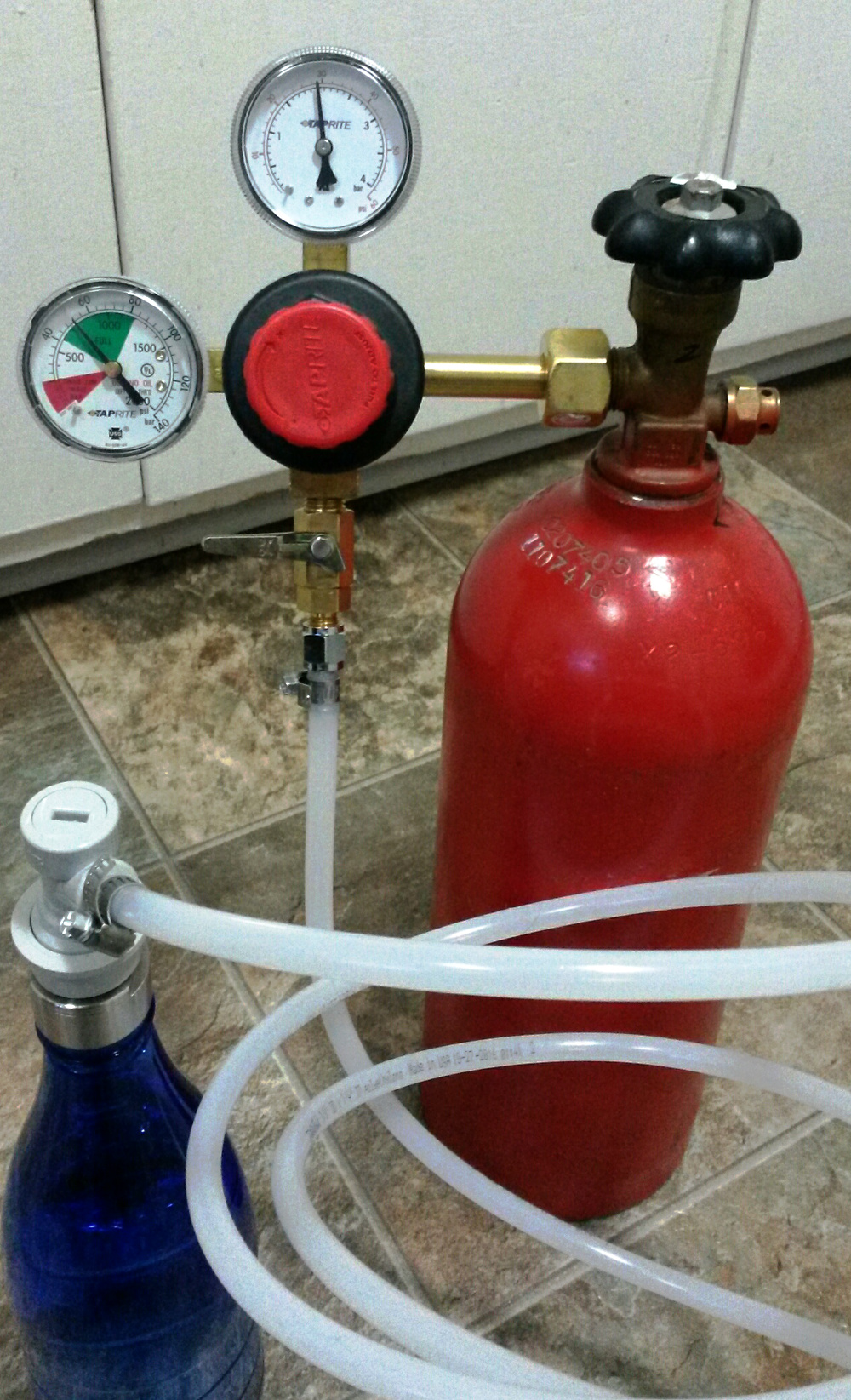DIY CO2(aq)
This post is about a DIY project I just did to get carbonated water at home, without getting a Sodastream.
I mostly followed the project description from this article, with a few small changes. Mainly, I got my CO2 cylinder from a home brewing supply store rather than using one intended for paintball, to ensure that the gas would be food-grade. Some similar projects that I found on other websites involved upgrading a Sodastream and this detailed description of a heavy-duty home carbonation rig.
The parts that I used were:
- 5 lb CO2 cylinder
- Pressure regulator
- Tubing (1/4" ID)
- Ball lock assembly
- Carbonator cap, stainless steel
- Pop bottle
Assembling it was a simple matter of screwing the regulator onto the cylinder and connecting the tubing to the barbed fittings on the regulator and the ball lock assembly using hose clamps. The ball lock assembly connects to the carbonator cap; they both close when disconnected, preventing gas from escaping.
Here is a photo of the assembled apparatus:

With the pop bottle 3/4 filled with chilled water, it can be carbonated by opening the valves, using the regulator to set the desired pressure. Shaking creates lots of bubbles and helps the CO2 dissolve faster. At first, I tried a pressure of 30 psi, but I think increasing it to 35 or 40 psi will give better results. Running the water through a carbon filter first would also be nice, as that would eliminate the chlorine taste that tap water has.
I want to be sure that I'm using pressures that are well below what the components can safely handle. The polyethylene tubing is rated for 120 psi, and plastic pop bottles can apparently handle 100 psi.
Henry's Law concerns how much gas can dissolve in water. The concentration that can be dissolved is proportional to the partial pressure of that gas (absolute pressure times the fraction of the gas out of all gases present). Compared to many other gases, more CO2 can dissolve at the same partial pressure (because it forms an acid and then ionizes); its Henry's Law constant is higher than those of oxygen or nitrogen or methane. For another post I calculated oxygen solubility. Now I'm going to present a calculation of CO2 solubility.
The molar mass of CO2 is 44 g/mol. Its Henry's Law constant at 25°C is Kh = 0.034 mol/L-atm. Assuming a pressure of 40 psi (2.85 atm gauge pressure = 3.85 atm absolute pressure) in the headspace of the bottle, the concentration of CO2 that will be dissolved can be calculated as:
Caq = Kh * P = (0.034 mol/L-atm * 44 g/mol) * 3.85 atm = 5.7 g/L
The cylinder contains 5 lbs (2270 g) of CO2, so 2270 g / (5.7 g/L) = 400 L can be carbonated. Refilling the cylinder costs $25, so each litre of water takes 6.25 cents to carbonate.